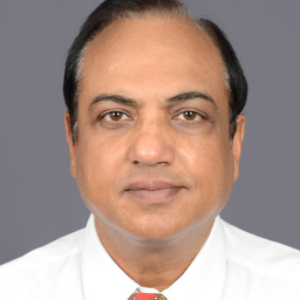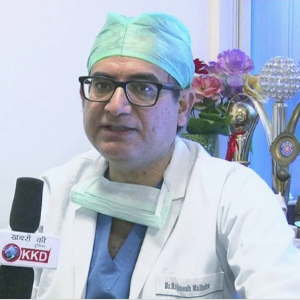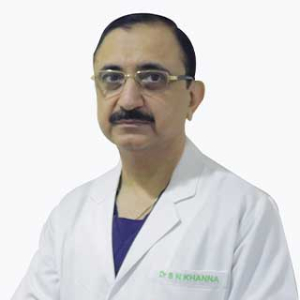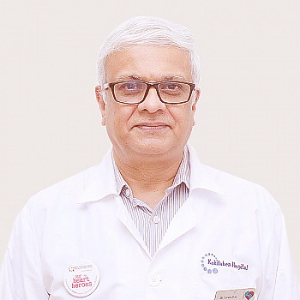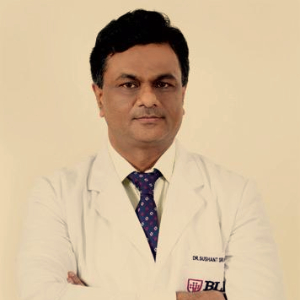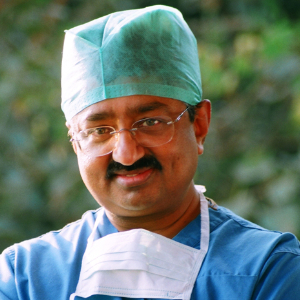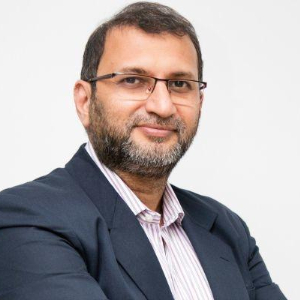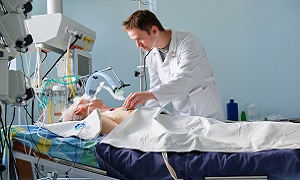Best Doctors in India for Thrombolysis Treatment
- Cardiac Surgeon, Gurugram, India
- Over 30 years’ experience
Profile Highlights:
- Dr. Murtaza A Chishti is one of the most well-known and distinguished Cardio-Thoracic and Vascular surgeons in North India
- He has more than 3 decades of experience in the field of cardiac surgery with a specialization in heart and lung transplantation surgeries.
- He has performed more than 6000 cardiac procedures that include Total Arterial revascularization, aortic surgery, complex and re-operative coronary surgery, CABG, and several other cardiothoracic surgeries.
- Cardiac Surgeon, Mumbai, India
- Over 36 years’ experience
Profile Highlights:
- Dr. Nandkishore Kapadia is one of the leading Cardiothoracic and vascular surgeons in India excelling in heart and lung transplant surgeries.
- He has 36+ years of experience in the field during which he has performed over 10000 CABGs, 2000 heart valve repairs, and 800 minimally invasive cardiac surgeries.
- He has also performed more than 5000 open heart surgeries, 200 heart and lung transplant surgeries, and 150 VAD and ECMO implantation procedures.
- Cardio Thoracic & Vascular Surgeon, New Delhi, India
- Over 30 years’ experience
Profile Highlights:
- Dr. Rajneesh Malhotra is a distinguished cardiovascular and thoracic surgeon in India with over 30 years of experience.
- He is an expert in all kinds of cardiac surgeries with a special interest in Robotic Cardiac surgery along with minimally invasive cardiac surgery and other traditional heart surgeries.
- Dr. Rajneesh Malhotra has performed several complex and high-risk cases and also specializes in heart transplant surgeries and surgeries for heart failure.
- Cardiac Surgeon, New Delhi, India
- Over 26 years’ experience
Profile Highlights:
- Dr. Surendra Nath Khanna is a leading cardiovascular and thoracic surgeon specializing in minimally invasive cardiac surgeries, heart valve repairs, and heart failure surgeries.
- Dr. Surendra Khanna has 26+ years of experience in cardiac care and has performed more than 17000 surgeries that include beating heart surgery, mitral and aortic valve surgery, and double valve replacement surgery.
- His expertise lies primarily in adult cardiac surgeries and has done some of the most complex cardiac surgeries in India
- Pediatric Cardiac Surgeon, Mumbai, India
- Over 33 years’ experience
Profile Highlights:
- Dr. Suresh Rao is a highly experienced cardiac surgeon specializing in congenital heart diseases and has performed more than 12,000 surgeries for congenital heart diseases and disorders.
- Dr. Rao holds an extensive experience of over 33 years in Pediatric and congenital cardiac surgery and has performed numerous simple and complex heart defect surgeries with successful outcomes.
- Dr. Suresh Rao introduced the Modified Ultrafication procedure after congenital heart surgery in India and has used the procedure in the treatment of a large number of pediatric as well as adult patients.
- Cardiac Surgeon, Mumbai, India
- Over 30 years’ experience
Profile Highlights:
- Dr. Suresh V Joshi is a cardiac surgeon in Mumbai with expertise in undertaking complex surgeries as a result of congenital heart diseases.
- He holds an extensive experience of over 3 decades in cardiac surgery and specializes in Coronary Artery Bypass Grafting (CABG); specifically Beating Heart CABG and Minimally Invasive Cardiac Surgeries.
- He is an expert in all kinds of coronary and interventional cardiac procedures and has performed over 15,000 cardiac surgeries for different kinds of heart defects and disorders.
- Chairperson Heart & Lungs Transplant, New Delhi, India
- Over 20 years’ experience
Profile Highlights:
- Dr. Sushant Srivastava is a renowned cardiovascular and thoracic surgeon specializing in heart transplantation.
- He specializes in performing Beating Heart Bypass surgeries and is credited with performing the procedure on the oldest patient in India (96 years old). He also performed the first awake CABG in North India.
- He has taken up close to 10000 cardiac cases in his career and performed 3000+ cardiac surgeries related to Coronary Artery Bypass Grafting (CABG), redo coronary artery surgery, heart failure surgeries, heart valve surgeries, and various other types of cardiac surgeries.
- Cardiac Surgeon, Bengaluru, India
- Over 30 years’ experience
Profile Highlights:
- Dr. Vivek Jawali is a renowned Cardiothoracic and Vascular Surgeon in India and has performed more than 18,000 cardiothoracic and cardiovascular surgeries.
- He has several firsts to his credit that including the first beating heart bypass surgery in 1992 and the first Minimally Invasive Heart Bypass surgery in 1994 in India.
- He performed the first Awake Cardiac Surgery in 1999 which is done without general anesthesia or ventilator but under continuous high thoracic epidural. He also performed the first awake open heart surgery in the world without general anesthesia or ventilator on a 74-year-old patient for triple bypass with aortic valve replacement.
- Cardiac Surgeon, New Delhi, India
- Over 30 years’ experience
Profile Highlights:
- Dr. Yugal Kishore Mishra is a well-known cardiovascular and thoracic surgeon in Delhi specializing in Minimally Invasive and Robotic cardiac surgeries.
- He has 3 decades of experience in CTVS and has performed more than 19,000 open heart surgeries to date that including various types of minimally invasive cardiac procedures such as the port access approach for valve surgery and ASD closure.
- He is the founder of the Robotic Cardiac Surgery Program at Fortis Escorts Heart Institute where he has performed over 500 robotic cardiac surgeries.
- Cardiac Surgeon, Mumbai, India
- Over 24 years’ experience
Profile Highlights:
- Dr. Zainulabedin Hamdulay is one of the best cardiac surgeons in Mumbai, India, and specializes in devising new and innovative techniques for cardiac surgeries.
- He has 24+ years of experience and has performed over 8000 cardiac surgeries that included complex valve repairs, congenital cardiac surgery, CABG, and several minimally invasive cardiac surgeries.
- With a motive to provide the best, affordable and comprehensive cardiac care to all his patients, he founded the Hamdulay Heart Foundation to provide aid to the economically backward community.
Best Hospitals in India for Thrombolysis Treatment
Thrombolysis
Thrombolytic therapy commonly known as thrombolysis, is a treatment for dissolving dangerous clots in the blood vessels and for improving blood flow. It can also prevent damage to your tissues and organs.
This procedure is often used as an emergency treatment for dissolving blood clots that form in arteries that feed the heart and brain, which leads to heart attacks and ischemic strokes.
Purpose
When blood clots form in a blood vessel, it severely reduces or even cuts off blood flow to the parts of your body that are served by that blood vessel. This event can lead to serious damage to those particular parts of the body. If the clot forms in an artery supplying blood to your heart, for example, it can lead you to a heart attack. Similarly, a clot cutting off blood to your brain might lead to a stroke.
Thrombolysis is a treatment meant for dissolving blood clots which can cause serious and even life-threatening damage unless they are eliminated from the system. According to research, when this treatment is used for treating stroke, thrombolysis can help to prevent or reverse paralysis as well as any such problems that might result otherwise.
In the case of a heart attack, thrombolysis is an alternative to stenting, a procedure which involves inserting a spring-like device into a blocked blood vessel. Stenting is generally the preferred treatment, as it both removes the clot as well as opens the blood vessel, which may have internal cholesterol deposits. Though thrombolysis removes only the clot, it has an advantage and it is that it can be administered in hospitals with fewer resources.
Thrombolysis is also used for dissolving blood clots forming in catheters or tubes put into people’s bodies for medical treatments, such as dialysis or chemotherapy.
Preparation
Thrombolysis is usually an emergency treatment; therefore, you may not always have time to prepare for it. If you are diagnosed with a condition that is treatable with thrombolysis, you will be transferred to an intensive care unit so that your heart and lung functions can be closely monitored.
If you will be undergoing catheter-directed thrombolysis, you might be asked to fast.
Procedure
Clot-busting agents are generally given in two ways: through a peripheral IV or through a thin tube termed as a catheter, which is navigated to the site of the clot.
First, the clot-busting drug will be administered. This is usually performed in an ICU while your healthcare team monitors your heart and lung functions. The drug circulates within your bloodstream until it reaches the clot. In most cases, the blood clot should dissolve within a day or two. The procedure is monitored closely by your healthcare team using special X-rays and ultrasound scans. These images can also help to determine if the vein wall is damaged or narrowed, making it prone to more clots in the future.
After the procedure
In most cases, the treatment should reverse or alleviate the symptoms. However, the treatment is not always a success, and it might not dissolve the blood clot. This might be the case if the initiation of the treatment was delayed. At other times, even if the clot has dissolved, the affected tissues can get damaged permanently, due to a prolonged restriction of the blood flow. In such cases, further treatment can be required for addressing the causes of the blood clot, as well as repairing any damaged tissues and organs.
Risks
Although thrombolysis can usually improve blood flow safely and effectively as well as relieve or eliminate any symptoms in most patients without the need for any more invasive surgery, it cannot be recommended for every person. It is not suitable for patients who regularly use blood-thinning medication, herbs or dietary supplements or for people with certain conditions associated with an increased risk of bleeding. Some of these conditions include:
- Severe high blood pressure
- Hemorrhagic stroke resulting from bleeding in the brain
- Active bleeding or severe blood loss
- Severe kidney disease
- Recent surgery
Patients who undergo this procedure have a very small risk of infection as well as a slight risk of an allergic reaction to the contrast dye which can be required for imaging.
Besides the risk of serious internal bleeding, there are few other risks, which include:
- Bruising or bleeding at the access site
- Migration of the blood clot to another part of the vascular system
- Damage to your blood vessel
- Kidney damage in patients having diabetes or other pre-existing kidney diseases
Intracranial bleeding is the most serious complication which is possible and it is potentially fatal. However, this complication is generally very rare.


